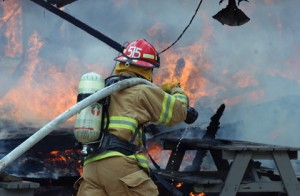By Cliff Avery
SAFE-D Executive Director
 On every uniform election date it seems that local voters somewhere in Texas are creating emergency services districts (ESDs).
On every uniform election date it seems that local voters somewhere in Texas are creating emergency services districts (ESDs).
Most are created to provide reliable funding for fire protection or emergency medical response. The fire departments – sometimes volunteer, sometimes municipal career – and emergency medical services groups who are the beneficiaries are grateful for the community’s support.
The taxpayers in the district should be grateful, too: ESDs are a bargain.
The Texas Constitution limits the tax rate that ESDs can levy to 10 cents per $100 of property value. Unlike most other political subdivisions, ESDs must include both the operations-and-maintenance component of the tax rate and the interest-and-sinking component under the 10-cent ceiling. About a third of the 300 ESDs in the state are at or near the maximum.
Let’s compare the tax effort with what a municipality needs to fund its fire department. I chose a Central Texas city with a population of about 50,000 people, mostly because I knew I could find its most recent budget online.
Its tax base was a healthy $2.7 billion, and total tax rate for the year was 53.02 cents per $100 of property value with some $14.3 million in property taxes raised.
Most people think that property taxes pay for a city’s budget, but in this case, that wasn’t true. Only about 15 percent of its general fund expenditures was paid by property taxes. About 47 percent was paid by sales taxes.
The city’s expenditure for its fire department for the year was $6,192,219. If the city were an ESD, without access to sales tax, how much would it need to provide that level of service?
It’s pretty simple math. With the tax base at $2.7 billion, one penny per $100 of property value would yield $270,000. (($2,700,000,000/100)*.01)).
Divide 270,000 into 6,192,219 to see how many pennies of property tax effort it would take to operate the fire department. The result: about 23 cents per $100 of property tax, 2.3 times the maximum tax rate that an ESD can charge. And that’s just the operations-and-maintenance portion of the fire department. It doesn’t include the general overhead expenditures that the city budgets under other categories (like the city legal department, the city secretary, the human relations department), functions that an ESD has to provide somehow – again under that 10-cent ceiling. Nor does it include the capital expenditures for big-ticket items like fire stations and fire engines that are calculated in another portion of the city budget. Once again: ESDs must pay off capital leases or bonded indebtedness and, along with everything else, keep their tax rate under the 10-cent cap.
Just to make sure this wasn’t an anomaly, I tried the same process with a city in Southeast Texas and one in Northeast Texas. Both came in around the same level, 25 cents and 22 cents, respectively.
About 52 ESDs have turned to sales tax to get some wiggle room under the ceiling. Many, though, are already locked out because other jurisdictions have claimed the 2 percent available to local jurisdictions throughout the district. Legislative efforts to lift the ad valorem cap came very close in 2009, but any prospects in the foreseeable future are bleak.
ESDs are a bargain, maybe too much so. But that discussion, alas, will have to wait. H









